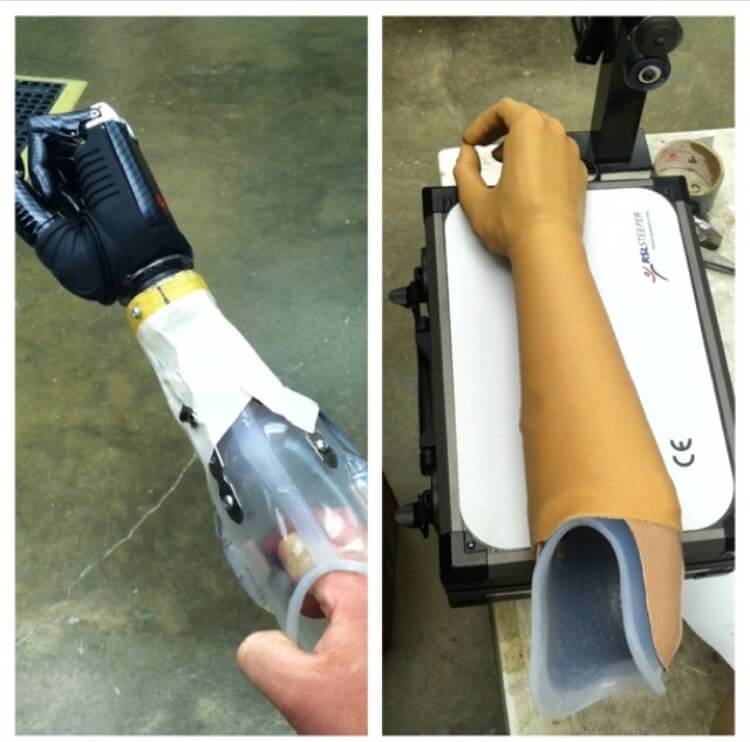
901-682-1006901-682-1006
Prosthetics for upper extremity amputations present a unique challenge for us. If the prosthesis is not comfortable and functional enough, then the amputee may go through life without using it daily. Obviously, a leg amputee must wear their prosthesis to get around/walk, but an arm amputee can usually still get around fine. This is the very reason that total comfort and functionality must be achieved by prosthetist and patient. Also, it is important to provide arm prosthesis as soon as possible to upper limb amputees due to an independence that is learned, the longer they go without prosthetics. We firmly believe in providing a prosthesis to help the person’s “other hand” to last longer. If you “overuse” your only hand it can wear out before your life runs its course.
 We offer a full array of body powered prosthetics including below elbow and above elbow amputation levels. These are particularly important due to less cost to obtain, less cost to service/maintain, most durable for harsh environments, and water resistant. Many arm amputees depend on these prosthetics to maintain daily with a functionality that they grow to trust and depend on. These lower tech prosthetics will always be around for this very important reason.
We offer a full array of body powered prosthetics including below elbow and above elbow amputation levels. These are particularly important due to less cost to obtain, less cost to service/maintain, most durable for harsh environments, and water resistant. Many arm amputees depend on these prosthetics to maintain daily with a functionality that they grow to trust and depend on. These lower tech prosthetics will always be around for this very important reason.
Externally powered arms are always evolving on the research horizon, with new levels of functionality and control. It is exciting to see what is being invented in the world of electric arms, and for every new product, there can be a new normally functioning arm amputee benefiting from this new modern day technology.
Here at Precision, we pride ourselves on staying up on the latest upper limb technology available. We want to be able to offer the best, most functional arm prostheses to our patients, depending on their needs and capabilities.
For above the elbow amputees, we offer a few different myo-electrically controlled elbow systems that coupled to complementing electric hands, can be operated/used in a very “normal” manner. All the functions of the prosthesis can be controlled with just two muscles, the biceps and triceps. This, along with suction socket suspension, offers a prosthesis that does not require an across-the-back harness system for suspension and control, as does body powered limbs. This provides an amputee the most normal function with modern day arm prosthetics. The hands and elbows can be operated fast or slow, depending on the strength of the amputee’s muscle contraction. Once learned, an arm amputee can get to have a very natural look and function with this proportional control system.
Below elbow systems can be just as natural in their functionality, especially combining the use of a user’s own elbow. The hands that complement the function of any level of arm amputation can offer multi-grip grasping patterns and flexible wrists with locking abilities. The newest technology offers a myo-electrically controlled thumb that can be moved into two positions to offer the user a lateral grip (like sliding a credit card) or an opposition grip (for most other general grasping). These features open up a whole new world of functionality to the upper extremity amputees.